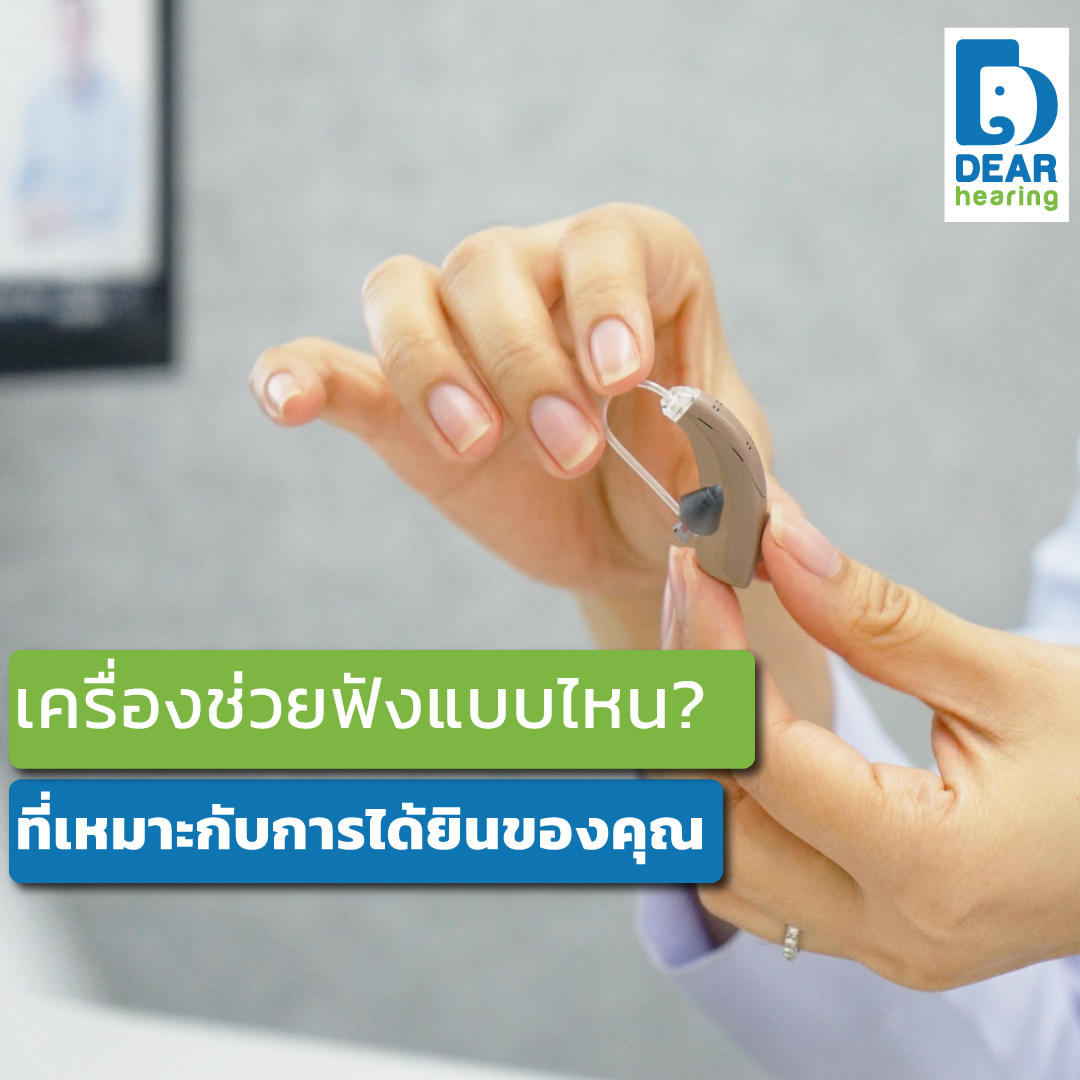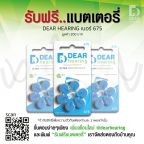At some point people’s ears will deteriorate with age. We therefore have to rely on hearing aids or hearing aids to return our lives to normal. In choosing a hearing aid that is suitable for our hearing condition and our ears, what type should we choose? Many people may not know. Some people search for information on the internet or some people may just buy hearing aids because they think they are cheap. And the device is small too. Others certainly didn’t notice, but it had a harmful effect on their ears. Today, Deere Hearing Center will give you the answer on hearing aids that are suitable for each ear. How much hearing loss is appropriate for hearing aids?
Types of hearing aids
Most types of hearing aids can be classified as follows:
1. Behind the Ear or BTE (Behide The Ear)
It is a hearing aid that is worn behind the ear. The sound receiver is located behind the ear. It serves to amplify sound and transmit sound to the ear mold. The ear hooks of the device are connected to tubes from custom-made ear molds. So that users can wear it comfortably and help reduce noise generation as well.
2.Behind-the-ear type or RIC(Receiver In The Cannal)
It is a hearing aid that is worn behind the ear. The sound receiver is located in the ear canal and the transmitter tube is attached to the crease of the ear, making it difficult to notice when wearing it.
3.Inserted into the ear canal or CIC(Completely In Cannal)
It is a hearing aid that is worn inside the ear canal. Has a special small size Although they differ in size, these types of hearing aids are considered the latest in technology and are as good as larger hearing aids. Their small size makes them difficult to notice when wearing a hearing aid. Because of its deep position inside the ear canal
4. Inserted into the ear or ITC (In The Earl)
It is a small hearing aid that is worn inside the ear canal. and is placed in the ear canal without any other components. The shape will vary according to the characteristics of each person’s ear canal. Can be controlled automatically But in some types there may be a volume control button.
Which hearing aids are suitable for what levels of hearing loss?
Starting at mild hearing loss
Starting at hearing loss from 26 – 40 decibels, hearing aids can be worn in the ear canal (CIC) or behind-the-ear hearing aids, BTE or RIC, depending on use. What kind of hearing aid do you like to wear? What kind of handle is convenient?
Moderate level of hearing loss
Starting with a hearing loss of 41 – 55 decibels, a CIC hearing aid can be worn, but it is recommended that an ITC hearing aid be better for a hearing aid in the ear canal. As for the behind-the-ear listening device, BTE or RIC type, it depends on the usage and which type you like.
Severe degree of hearing loss
Starting with hearing loss from 56 – 70 decibels, ITE hearing aids can only be worn in the ear canal because they are the type with the largest size of hearing aid in the ear canal. As for behind-the-ear aids, RIC and BTE types can still be used.
The degree of hearing loss is very severe.
Starting with hearing loss from 71 – 90 decibels, a behind-the-ear hearing aid must be used only because if using a hearing aid in the ear It may cause the magnification power to be insufficient. You can choose between BTE and RIC behind-the-ear hearing aids. RIC hearing aids will require speakers that are larger than normal.
Degree of permanent hearing loss
Begins with hearing loss of 90 decibels or more. It is necessary to use only behind-the-ear hearing aids. And the hearing aid may need to be larger than normal. In order to have sufficient amplification power for hearing loss. That is the RIC behind-the-ear hearing aid.
Choosing a good hearing aid and suitable for us We don’t just think about hearing loss. There are other factors that we need to take into account as well. such as beauty Hearing aid size Ability to handle hearing aids that there is a problem with stiff hands Or are your hands shaking? and daily life in order to be able to adapt hearing aids to suit daily life












